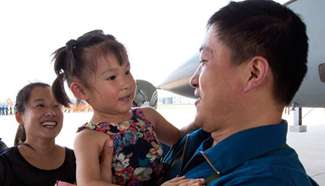BEIJING, July 29 (Xinhua) -- A recent tiger attack at a wildlife park in Beijing has started discussions about zoo management.
The attack, on July 23 at Beijing Badaling Wildlife Park in Yanqing District, was caught by CCTV.
The footage, shot inside the wild animal enclosure, shows a woman getting out of a car to walk to the driver's side. A male driver then gets out to speak with the woman. While they are talking a tiger pounces on the woman and drags her away. Another female passenger, who was later confirmed as the woman's mother, was attacked by another tiger when she attempted to save the young woman.
The older woman died and her daughter was seriously injured.
The attack sparked heated online discussion.
Some netizens argued that the wildlife park should not be responsible for the accident because all visitors are informed of the danger and they must sign an agreement with the park to stay in their cars.
"The park had warned them of the danger but they ignored the safety requirement," said user "xsw98750" on China's twitter-like Sina Weibo.
This view was echoed by Zhu Wei, a law expert at the China University of Political Science and Law. Zhu said the tourist left her car knowing the danger she was putting herself in. The zoo should not be held accountable.
However, other people held the view that the park should take responsibility.
"Private cars should not be allowed in the park. It is supposed to have its own vehicles for tourists to view the animals, especially those ferocious beasts," said Weibo user "A_Tianli."
Actually, self-driving tours are allowed in many wildlife parks around the world. Many wildlife parks and zoos have strict rules for people who take their own vehicles into wild animal territory.
In Kenya, wildlife reserves allow tourists to drive their own vehicles. If tourists leave their vehicles in forbidden areas, however, they will face punishment such as being banned from the reserve, said Paul Udoto, an official with the Kenya Wildlife Service.
Despite the strict rules, there have been many animal attacks around the world in recent years.
Feng Limin, expert with International Union for Conservation of Nature (IUCN), said animals tend to avoid people in the wild, while those in captivity are more likely to attack.
"Zoos should make sure there is a safe distance between tourists and beasts, and try their best to prevent the animal from being over stimulated," he said.
It is better for zoos to organize and manage sight-seeing vehicles, or set up fences between main roads and animal habitats, he said adding that tourists need to be made more aware of the dangers.
Actually, China Wildlife Conservation Association (CWCA) drafted a safari zoo safety standard in 2005, which detailed infrastructure construction and regulations to ensure safety.
However, the standard, signed by many wildlife zoos as an industrial convention, was not legally binding, and was not thoroughly implemented by many profit-driven zoos.
Feng suggested that government departments should improve their supervision of wildlife zoos to prevent similar attacks in the future.










